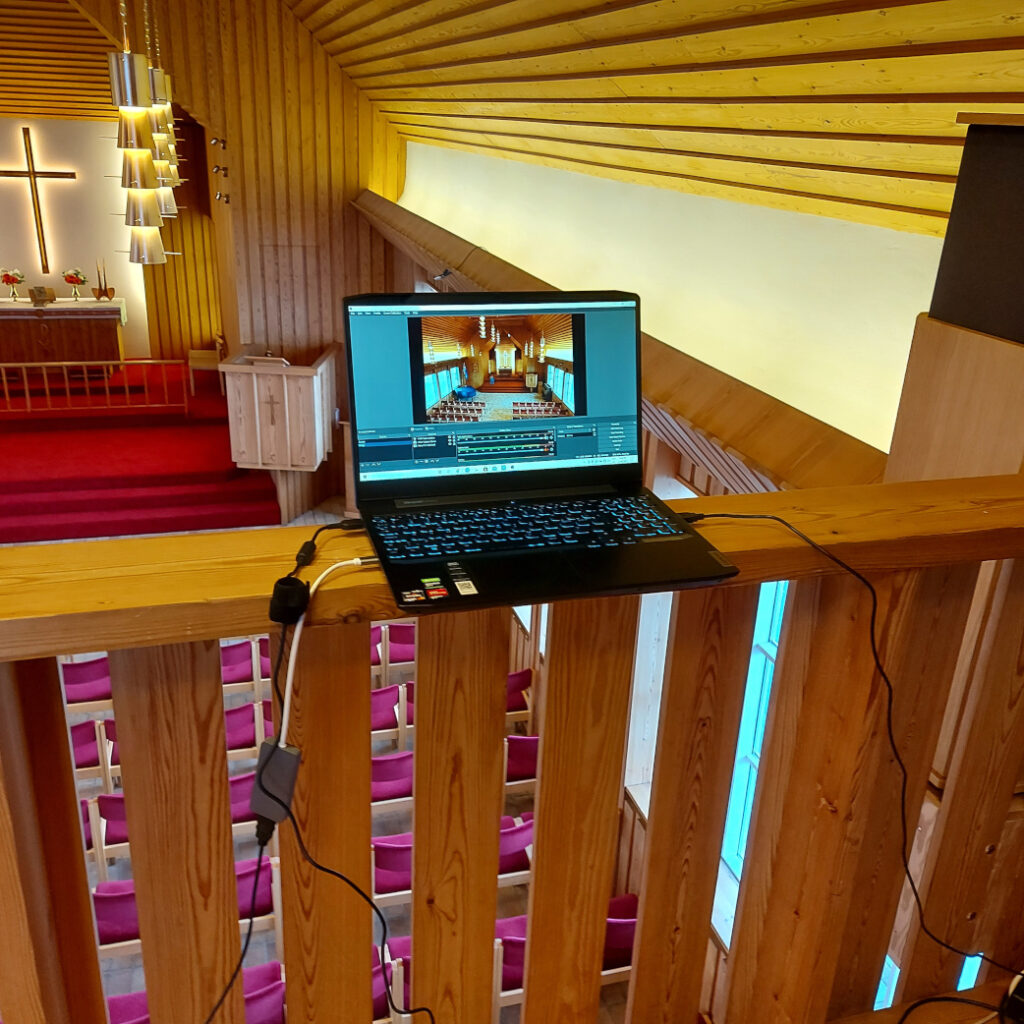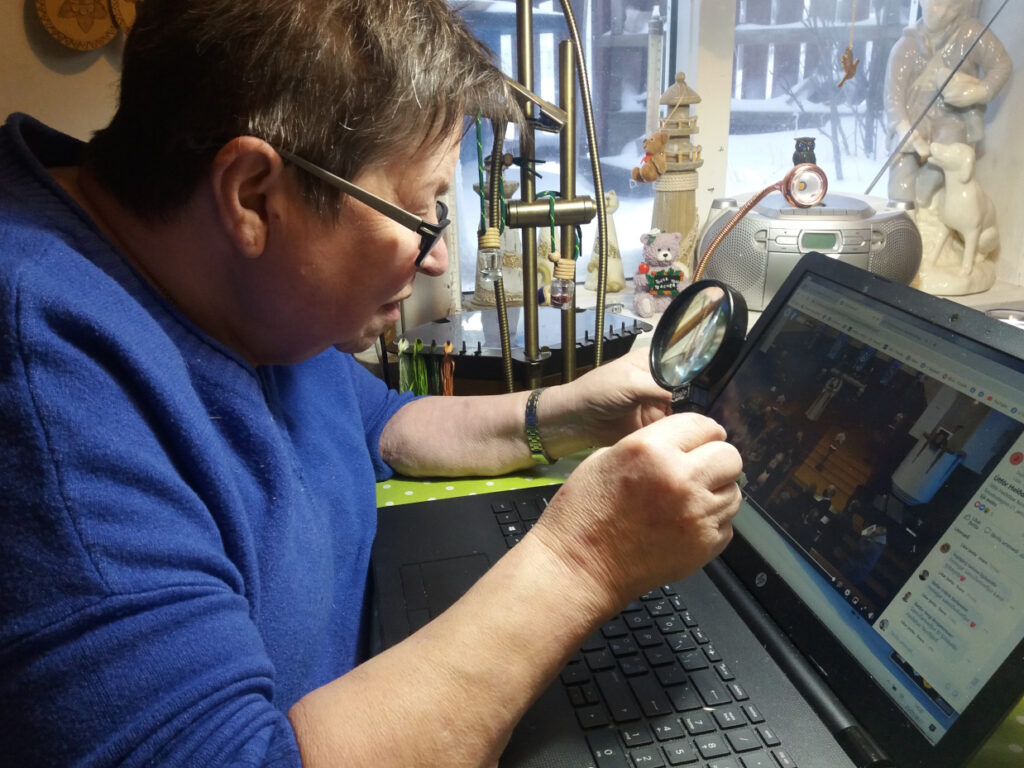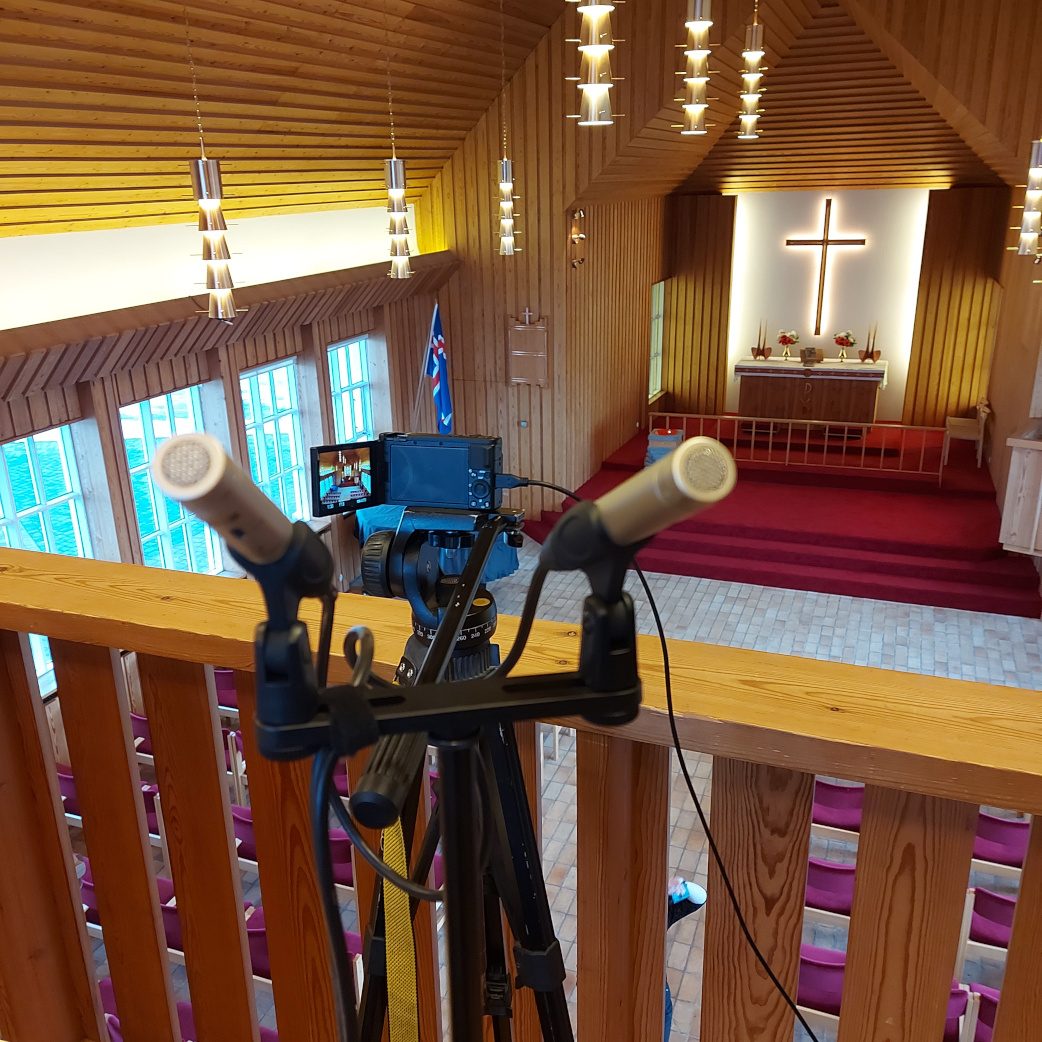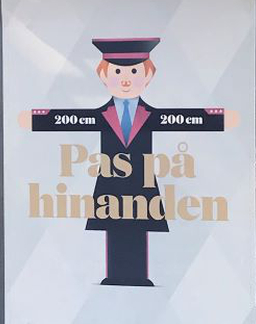Webcasting from funerals in Iceland during the Covid-19 pandemic
Just yesterday I heard a funeral announcement on the Icelandic state radio, RÚV, saying that a funeral will be held next Saturday here in the town of Hólmavík, where I’m working, and that the service will be live streamed on the Facebook-page of a close relative of the deceased. This is one of the novelties of funerals during the Covid-19 pandemic that we are getting used to. Due to the pandemic, we are witnessing experimentation and innovation in many aspects of our daily lives. It is as if our everyday has been turned into a laboratory of new ways of living, dwelling, and behaving. We find ourselves in the position of renegotiating limits and boundaries, politeness and propriety. Funerals are one very important part of people’s lives that has had to adapt to this new reality. Funeral service companies are crucial for setting up the ritual according to what is customary, what is proper form, and helping people with what options there are, in what is arguably one of the most important events in a person’s life. Their staff are experts in dealing with the wishes of the next of kin, the complex rites involved in different kinds of funerals, and operating the hearst and other specialised equipment. During the pandemic, funeral services, such as the one operating in Hólmavík, have had to adapt to strict limits on the number of people who can attend services in the local church, which usually seats around 150 people. One way of dealing with this is to set up live streaming from the service. This is not a straightforward change, and poses many challenges that are both technical and ethical.
Broadcasting funeral services is not entirely new. For many years Icelandic churches, especially smaller ones with limited seating capacity, have used short range FM radio equipment to broadcast the service to people sitting in their cars in the parking lot outside the church. Hólmavík church took this a step further some 10 years ago. The church is conveniently situated close to the local nursing home and the administration found a way to transmit the signals from a video camera in the church via cable to a big TV screen in the home. This way the elderly staying there were able to see the service without having to go to the church, which for many of them was difficult or impossible. In this case a small webcam-type camera was fixed to the outside of the railing of the choir loft, over the entrance, and pointed at the altar. On the same occasion the church invested in new microphones and a short range FM radio transmitter. Thus several years before the pandemic happened the church had taken steps toward broadcasting its services locally. Gunnar Númi, the technician currently responsible for setting up the recording and broadcasting equipment, told me he had often wondered whether a webcast wouldn’t be a better way to get the service across to people outside the church, but there were many considerations, legal, technical and ethical, to be taken into account. These were still there when the pandemic hit, but then it suddenly became crucial to overcome them and find ways to incorporate webcasting in church services.

Photograph: Áki Guðni Karlsson
The funeral service in Hólmavík is run by Ingibjörg Sigurðardóttir and Viðar Guðmundsson who also operate in other towns in Western Iceland, including Borgarnes. Each church they service presents a unique set of challenges and opportunities for the use of technical equipment. In smaller country churches the quality of the wireless mobile signal can be a limiting factor when live streaming from the site. In 2020 the local cooperative-run store in Hólmavík was dissolved. There remained a staff fund that the former employees decided to donate to the church in order that it could invest in mobile equipment for webcasting services both in Hólmavík and nearby churches in the Strandir region. The funeral services have to manage the recording and streaming equipment, along with everything else involved in setting up a funeral. Keeping things simple and manageable is crucial, as the service proceeds uninterrupted and there is only one take possible. In smaller churches they have to manage with one camera connected to a mobile phone for streaming, but inside Hólmavík church there are some facilities such as a wifi connection, a computer and sound mixer situated in the choir loft. If needed, the local technician will help them set things up and even manage the recording, but he’s currently doing this work pro bono in his spare time. Most of the time the equipment is set up so that one person from the funeral service can start the live stream by clicking a button. In the Strandir region this service is offered as part of the funeral service at no extra charge. In larger towns, generally a professional video editing company will be available for hire to implement live streaming and will thus add to the cost of the funeral, but can provide additional perks, like two or more cameras, recording the service at different angles and an on-site technician that manages the broadcast. Viðar mentioned that during the pandemic people seem to be more willing to spend on the funeral service itself, as the traditional funeral reception after the service was first banned outright and then limited to a small number of next of kin. The reception is usually the most expensive part of the funeral, with food and drinks for friends and family of the deceased. It is also an important social event, especially for older people, and especially in smaller towns and villages.
I talked to a number of people who had watched live streams of funerals in the past year and they all agreed: attending a funeral by watching it on a website is a very different experience compared to attending a funeral in church. They did not bother to dress up or otherwise try to recreate the solemnity of church in their homes. They watched on their laptops, tablets or smartphones, sitting in their kitchen or living room, or even in bed. One of the benefits, according to one person I talked to, was that if you watched the service afterwards (not live) you could skip the part where the priest reads passages from the Bible, and go directly to the eulogy, where she talks about the life and personality of the deceased. Some said that they might dress up or light a candle if the deceased was a close friend or relative, but they hadn’t done so yet. They concurred that they missed the social aspects of the funeral — especially meeting old friends at the reception — and they were interested in identifying the people appearing in the recording, although this was difficult in practice.

Photograph: Jón Jónsson
The funeral services responsible for the recording try to make sure that the people attending the service are not identifiable, especially the next of kin, traditionally seated on the front rows and first to turn and follow the coffin as it is carried outside. This is a matter both of privacy and showing consideration to those grieving. The setup of cameras and microphones takes into account both legal and ethical aspects of the recording. An Icelandic documentary from 1999, Corpus Camera, by filmmaker Hrafnhildur Gunnarsdóttir and anthropologist Sigurjón Baldur Hafsteinsson, discusses recording funerals by family members, using handheld cameras. Apart from showing that the phenomenon is far from new, it also highlights some of the issues people wonder about, such as who has the right to record, and who can give permission, how visible should the recording equipment be, and who keeps the recording afterwards. One woman interviewed said that she refrained from recording the funeral of her father out of consideration for her sisters, but when she later got a recording from another person present, she was glad to have it, as it enabled her to better recall the event.
A small and rather closely-knit society, Iceland has sometimes been described as one big high school reunion. It is perhaps no wonder then that Facebook has become the social media of choice with Iceland being in 12th place of countries with the highest reach of Facebook users. Over 90% of the inhabitants have a Facebook account. In the recent case of live streaming from funerals, the recording is usually made accessible on the Facebook page of the deceased, turned into a memorial page, where friends and family have access, or the Facebook page of a next of kin. As a last resort, the Facebook page of the church is used, where everyone can access it. The recording is usually accessible for 2-3 days after the service and then disappears. The next of kin can ask for a copy of the recording as a keepsake, but no copies are kept by the funeral services themselves and the recording is deleted when the next funeral takes place.
Danish ethnologist Tine Damsholt has in a recent article highlighted the many ways people deal with time management during the pandemic (“Times of Corona: Investigating the Temporalities of Everyday Life during Lockdown”). Live streaming funerals is another example of how we have addressed the social challenges posed by the pandemic and the restrictions it has caused. In many ways the situation has forced us to experiment and improvise, and sometimes make good with technological innovations that were previously seen as improper or simply not preferred, as anyone who has had to teach courses using videoconferencing software can testify to. This new addition to funeral customs, has clear benefits as well as challenges. Viðar and Ingibjörg said that many more people attended the funerals than before, with up to 200 viewing the live stream, in addition to the 100 attending in person, in a recent funeral they managed. There was no question in their minds that this was something that would continue after the pandemic, and people would come to expect funerals to be available online. In this case the pandemic has made us take a leap of faith, and there will be no turning back.
Further reading

Alice Marwick and Nicole B. Ellison
“There Isn’t Wifi in Heaven!” Negotiating Visibility on Facebook Memorial Pages


